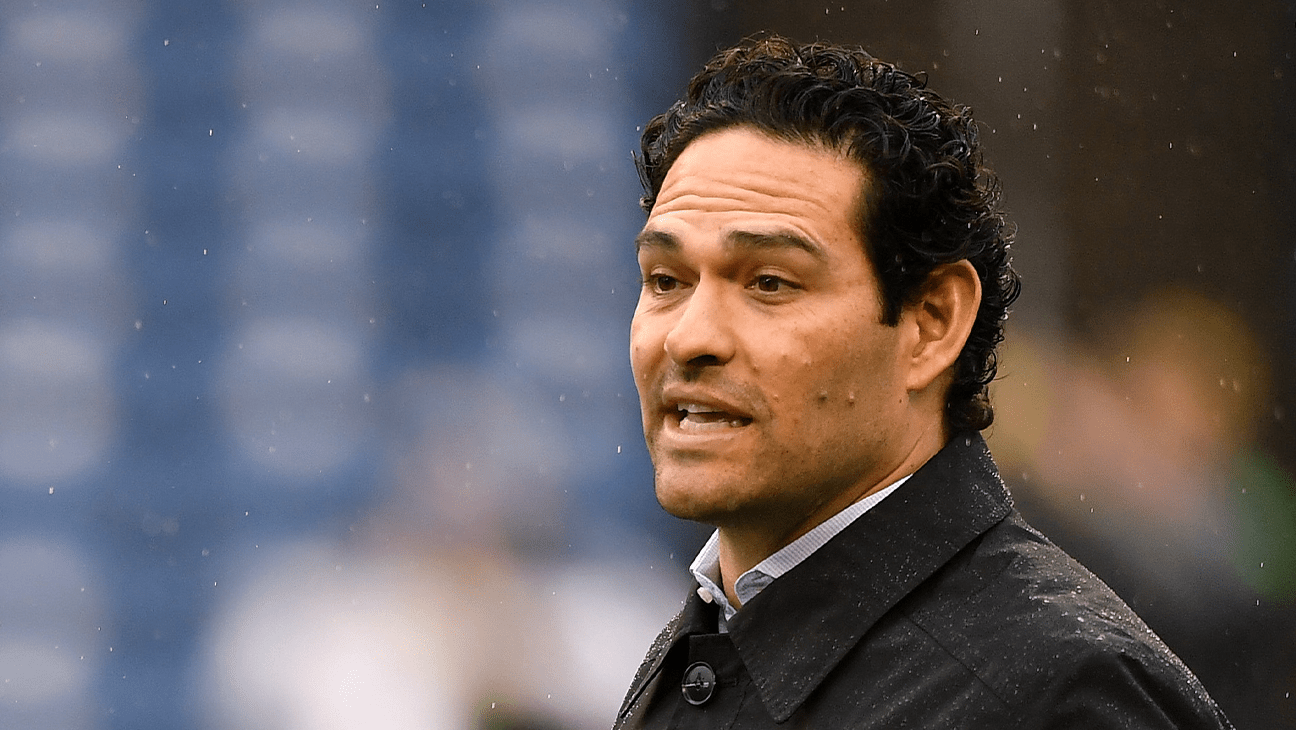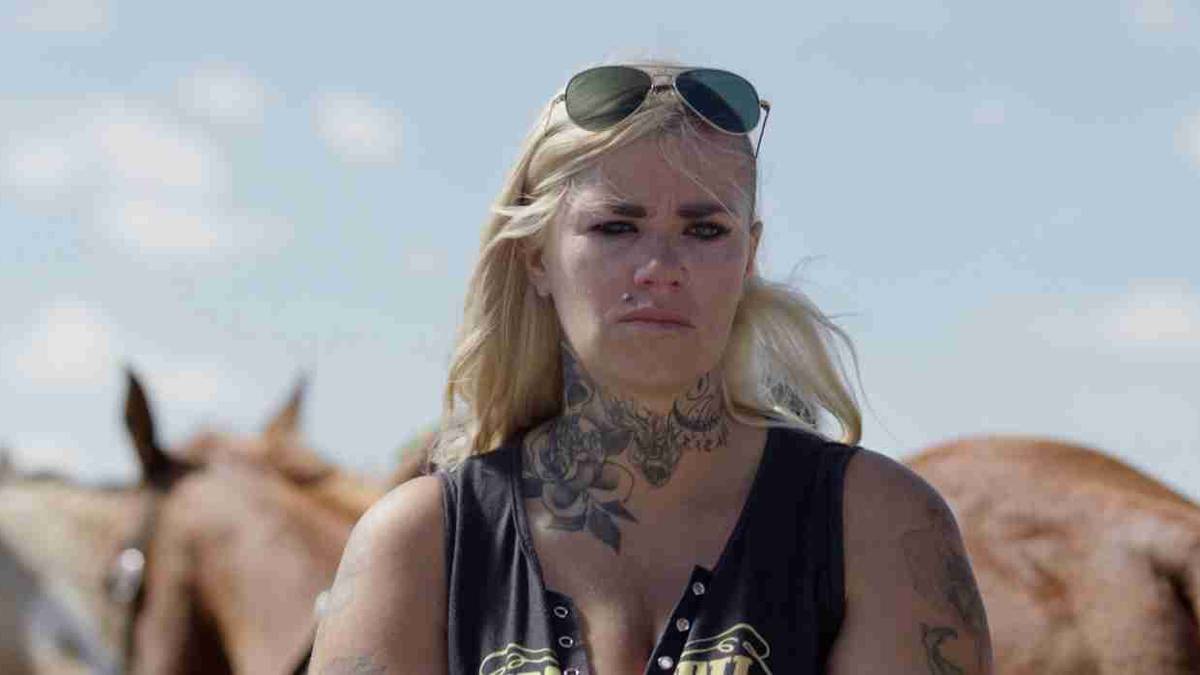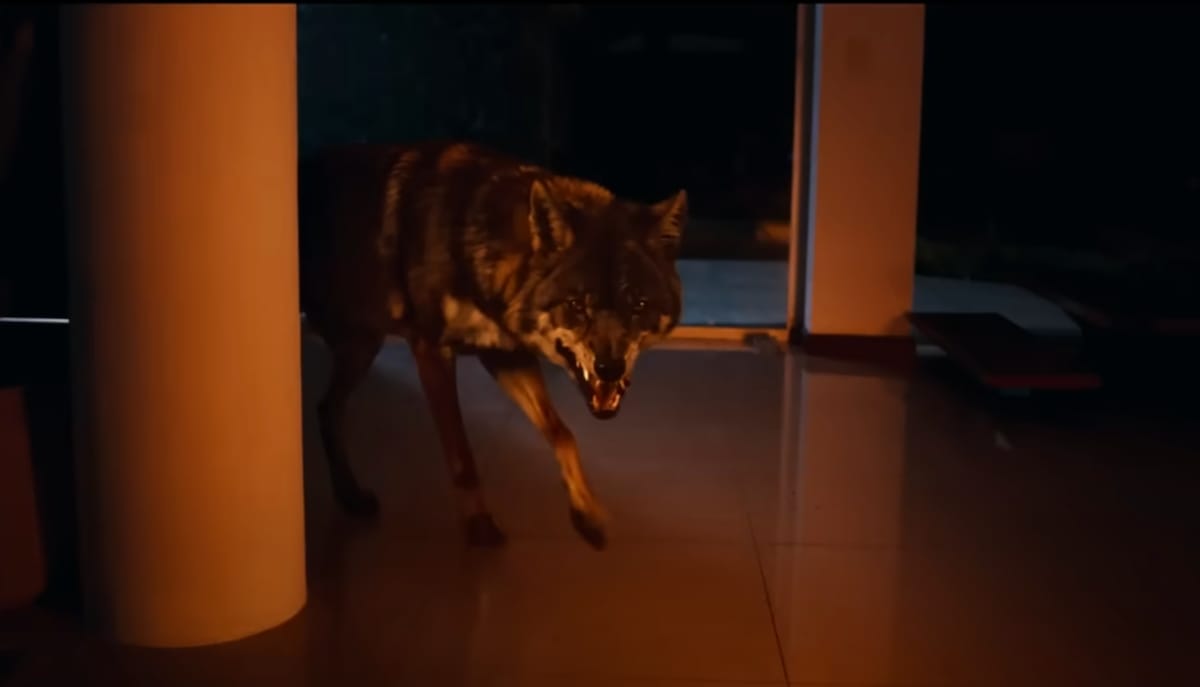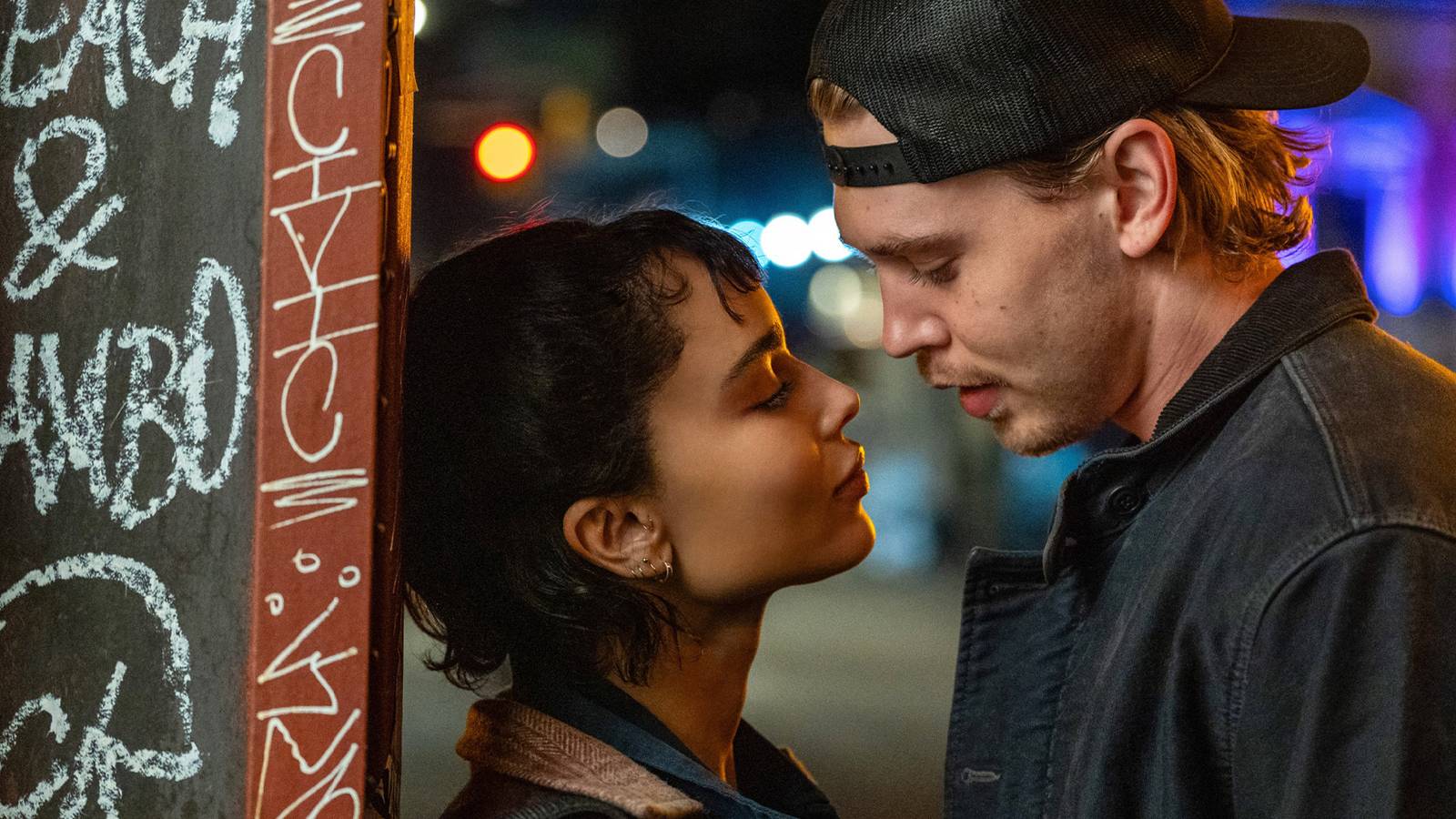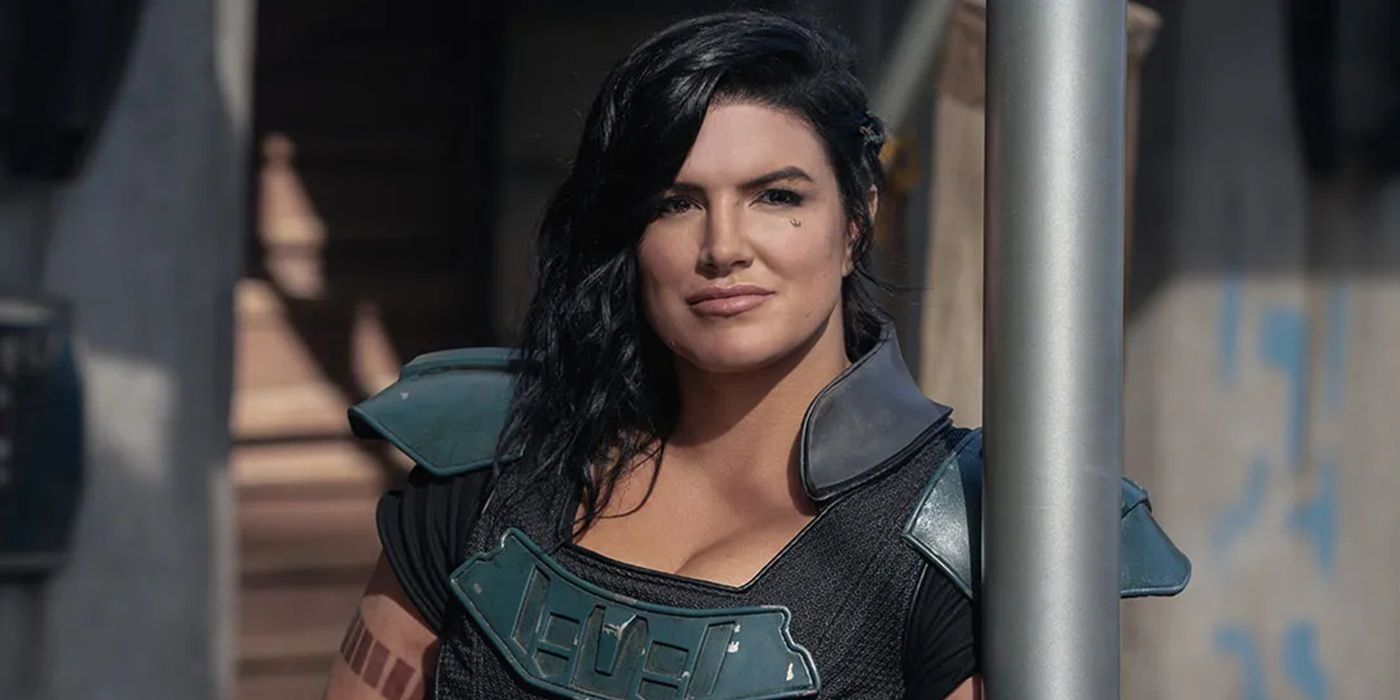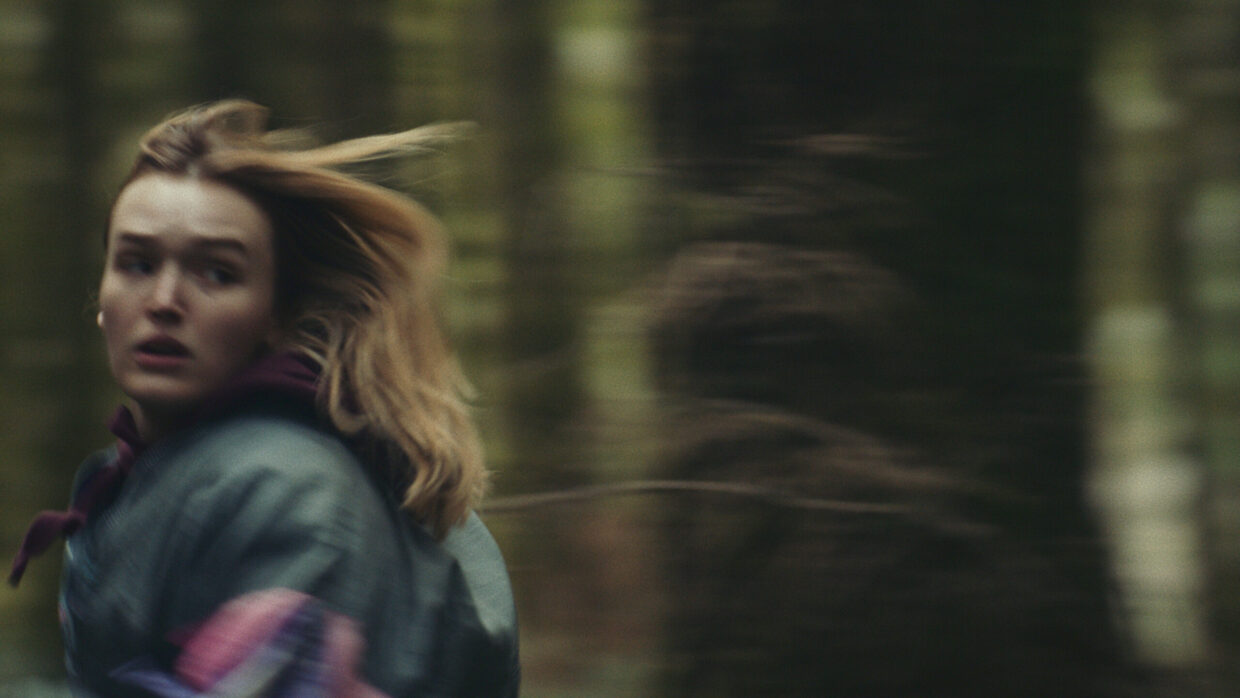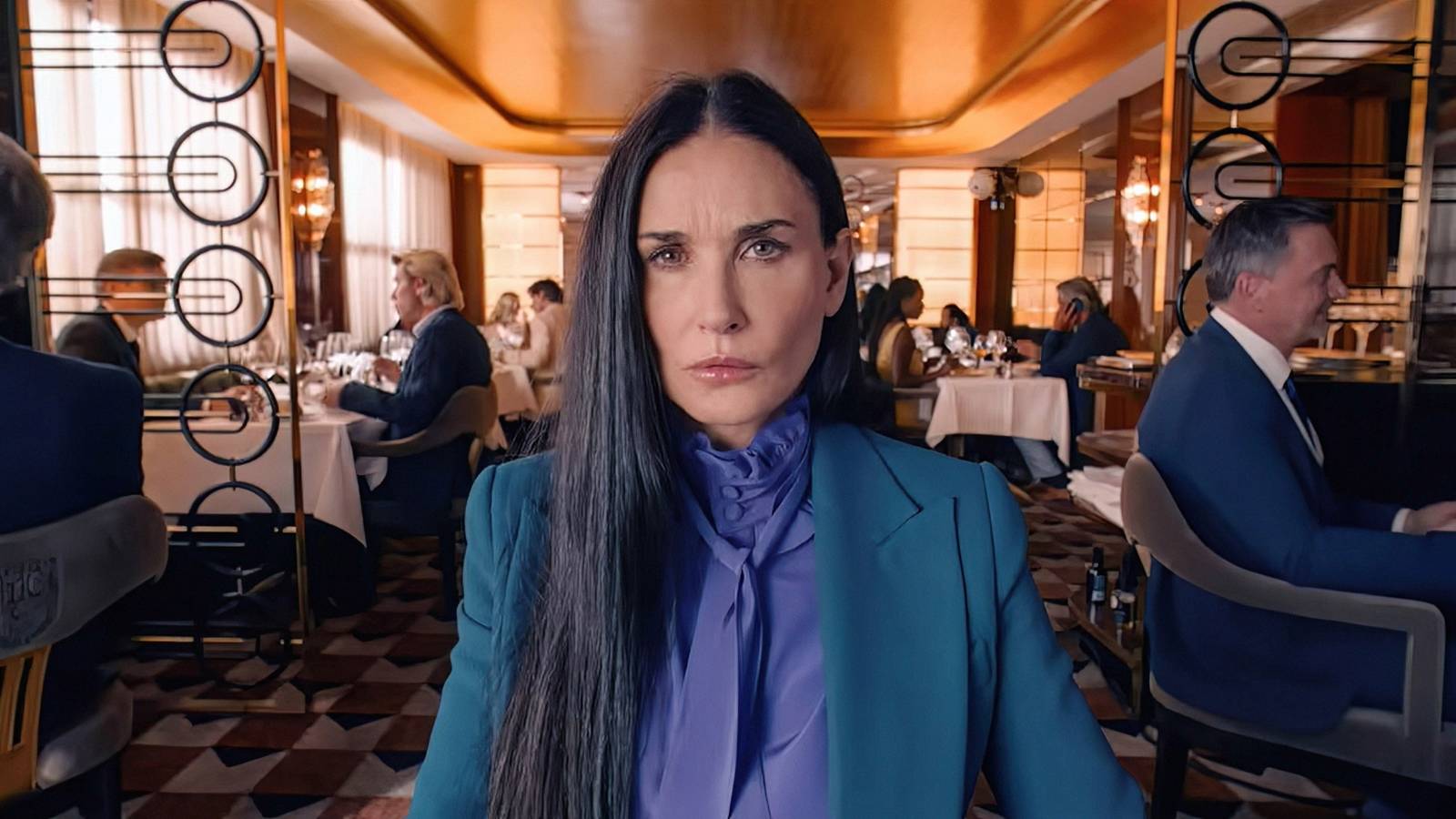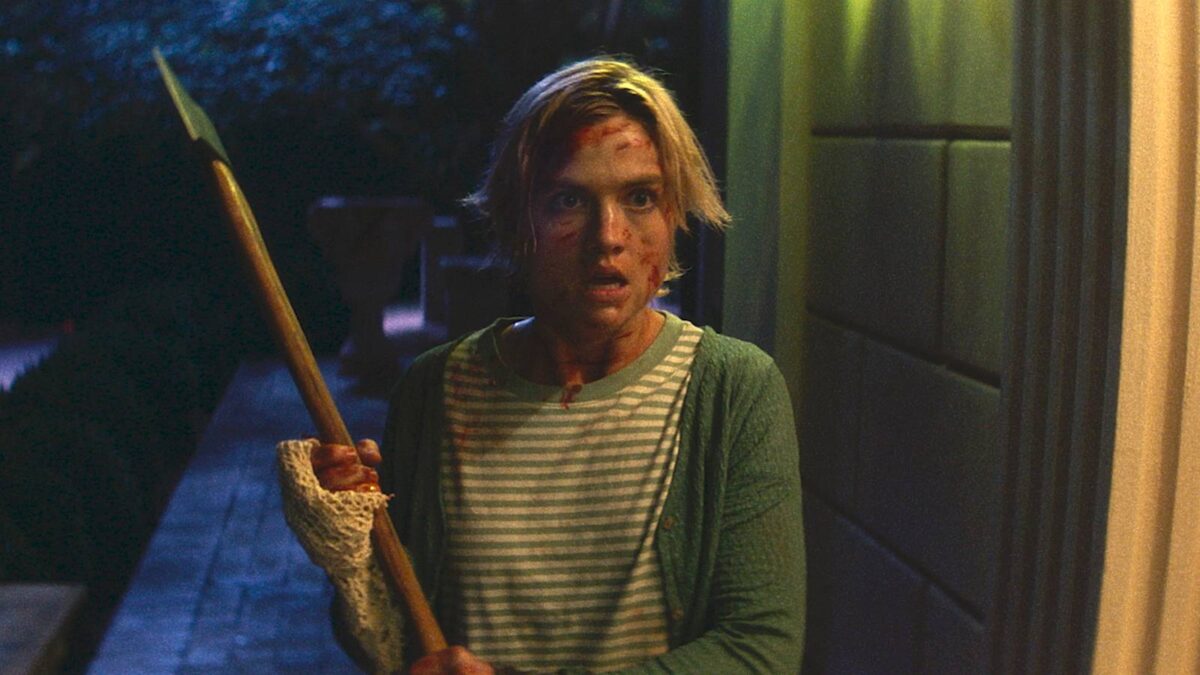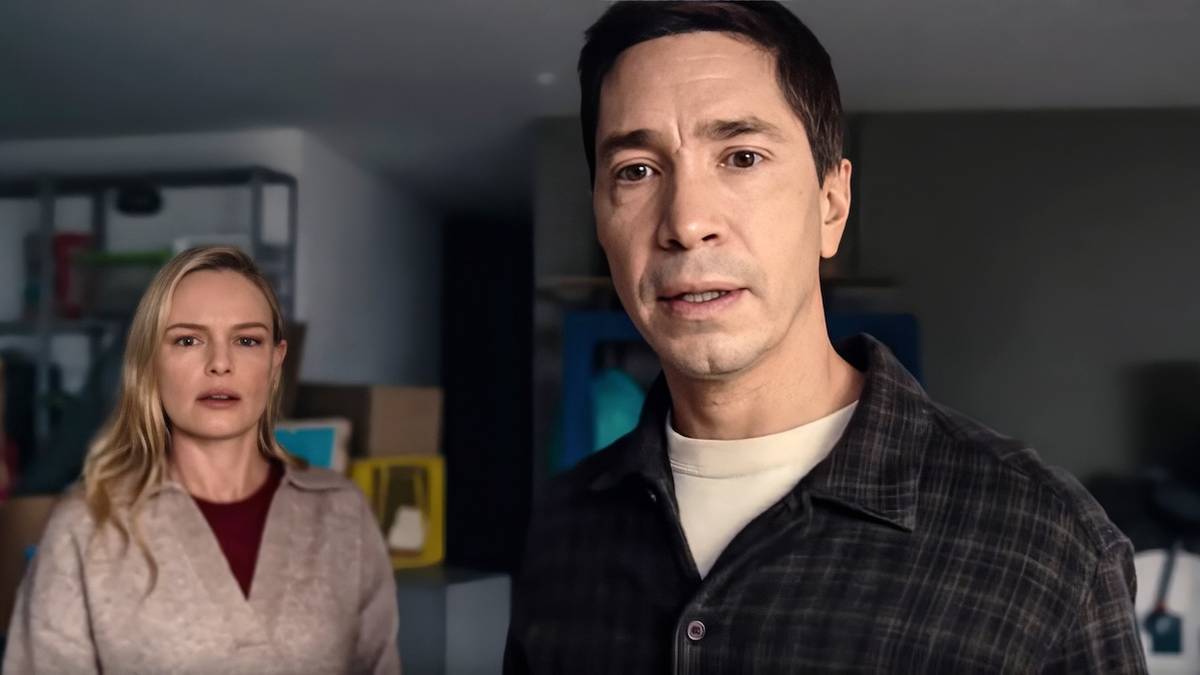
A Rat in Nicolas Cage’s Pocket Led to This Unscripted Confrontation in ‘The Surfer’
May 3, 2025
Summary
Collider’s Perri Nemiroff talks with Nicolas Cage and Lorcan Finnegan during an advanced screening of The Surfer.
Cage discusses why The Surfer felt like the perfect next role, why Finnegan was the right filmmaker for the job, and what makes the director’s filmography so unique.
Finnegan talks about collaborating with Cage, finding the right cast, especially casting someone opposite Cage, like Julian McMahon, visual storytelling, color choices, and how editing helped achieve a dreamlike feel while keeping the film grounded.
The Surfer is the latest feature from Irish director Lorcan Finnegan, who continues to display his knack for psychologically layered and visually stunning films he first established in movies like Vivarium and Nocebo. To celebrate the film’s release, Lorcan joined Collider’s Perri Nemiroff for an in-depth conversation about the making of this Australian thriller.
The Surfer follows a man, played by Nicolas Cage, who returns to his childhood beach, only to find himself locked in a tense standoff with the local surf community. In addition to Cage, the cast includes Julian McMahon as Cage’s nemesis, Nicholas Cassim, and Finn Little. In the movie, Finnegan blends dreamlike surrealism and tension to frame the descent into paranoia, bringing a striking visual language to the film.
During the Q&A hosted by Nemiroff, Finnegan discusses the creative process that brought The Surfer to the silver screen. The director also shares insight into working with Cage, the film’s inspirations and influences, and more. But before that, Cage surprises the audience with a pre-screening chat, where he shares his experience working with Finnegan on “bringing the chaos” and the humor to this fever dream film.
Nicolas Cage and Lorcan Finnegan “Bring the Chaos”
“I don’t want something that’s like a pop song getting stuck in my head. I want it to take me on a ride.”
PERRI NEMIROFF: Nic, I feel like I’ve seen you do everything on the big screen, so when this script comes your way, what is it about it that makes you say, “I can expand my craft as an actor by tackling this story and this character?”
NICOLAS CAGE: I just love the title, to begin with. The Surfer. I grew up in California. I would take the bus to the Santa Monica pier and watch all the surfers as a young man, 11 and 12, wanting to be a surfer. So I thought, “That’s great. I can play a character known as The Surfer.” Then I read the script, and I thought, “Well, this is different. This is weird. This is alternative. This is a non-linear narrative. I have no idea what’s about to happen. It’s got me turning the pages!” Then, I knew Lorcan’s work, Vivarium, and I thought, “Well, he has a sense of humor and is able to bring the chaos and infuse some humor in it.” So, I thought it’d be a good collaboration.
“Bring the chaos.” That’s such a good way to describe Lorcan’s work here.
Lorcan, in terms of working with Nic now, he’s a one-of-a-kind powerhouse in this industry. What is something you were able to accomplish with this character that is specific to him being in the role?
LORCAN FINNEGAN: I think the whole film, really, because you’ll see it’s a film that’s told pretty much just through his subjective experience of the few days that he spends in this movie. The audience experiences everything as the character experiences everything. It was always going to be quite intense and would have this arc starting out as quite dramatic and then becoming weirder with the violence, the action, and the comedy, and there’s all sorts of goings-on in the film. There’s not many people who could pull that off, really. We also like a sense of adventure, so going off to Australia, a little town called Yallingup, three hours south of Perth, to make this film together was just great. All the stars aligned on this one.
Nic, I’m gonna let you give Lorcan some flowers now because I love his filmography and I love, in particular, the fact that every single film he makes feels so uniquely his own. Can you tell me something that you saw him do on set that speaks to that singularity?
CAGE: I think what it is that lends a distinction to Lorcan is that he has a unique sense of humor that is entirely his own, and you feel it in the movies. Like I said, even if he’s bringing chaos, you can feel that undercurrent of humor. An example of that that I think of fondly on the set was that phone that had a cord that wasn’t attached to anything that was always just around in my pocket, or I was holding onto it as The Surfer. I didn’t know where the prop phone was, and I said, “We gotta shoot, and I don’t know where the phone is.” Lorcan went somewhere, and he came back with a phone with a dangling cord and went, “It’s for you.” So, that kind of comedy, that’s a quick wit, and it takes a minute to understand what’s happening, but that’s kind of like the experience of shooting The Surfer and watching The Surfer.
Related
‘The Surfer’ Review: Nicolas Cage Commands an ‘Uncut Gems’ By the Sea | LFF 2024
Cage never likes to have it easy, does he?
You made a movie that takes place in Australia. Nic, you’re American, and Lorcan, you’re Irish. What is it about coming at this story from the outsider perspective that you think enhances it?
FINNEGAN: Yeah, and then our cinematographer is Polish, so we were kind of an odd bunch walking into a bar. I think the character being an outsider and us being outsiders also follows this tradition of Australian cinema a little bit, like Ted Kotcheff being Canadian and making Wake in Fright and Nicolas Roeg making Walkabout. So, the door was cracked open a little bit, and that’s what we wanted to kind of do, our version of an Ozploitation film, but a contemporary take on it.
To tease some specifics, this is a psychological thriller. It’s meant to feel like a dream. Is there a specific part of the movie that demanded the most workshopping in order to fully wrap your mind around what you needed to do to achieve the goal of that scene?
FINNEGAN: There’s one scene. We didn’t really workshop it, it just took a little bit of figuring out how to edit it and shoot it and get the audience to a point where they believe. I can’t tell you what it is because you’re about to watch the film, but it’s sort of his character almost splitting off and becoming, like, two people.
That’s a good tease! Nic, do you have a moment?
CAGE: There were so many different moments. Mostly, it was a different kind of fascination with the lenses that Lorcan was using and the different effects. He had water on a mirror, and it was reflecting off my face. He was creating an in-camera place, almost like a fluid place, like a dream, and it enhanced the narrative, making it more dream logic. It informed, in terms of flashbacks and forward cuts, that this character was processing something. What I like are enigmatic narratives, non-linear narratives, alternative narratives and approaches. I don’t want something that’s like a pop song getting stuck in my head. I want it to take me on a ride. So, he did that with the way he shot it and the way he told the story with sort of hopscotch cuts, but it also helped me as the performer to bring a sense of, “What’s the agony in his eyes that tells the story without having to actually say it?”
You feel that big time when you’re watching it. Thank you so much for joining us for this pre-screening Q&A!
If Not Nicolas Cage, Perhaps This ‘White Lotus’ Alum Could Play ‘The Surfer’
Finnegan admits the list of actors who could tackle this role was very short.
Image via HBO
I wanted to start with this particular question, because I love film festivals and the fact that you can find creative partners there. That happened with you and the screenwriter of this movie, Thomas [Martin]. Can you tell me about meeting for the first time and the first thing you saw in him that made you think to yourself, “That right there is someone I have to work with?”
FINNEGAN: We met at the Tribeca Film Festival in 2012; we both had short films there. We were just hanging out, and we were getting on well, and going for drinks and everything, and then it turned out that we lived about 30 meters from each other in Dublin. So we were like, “Oh, let’s meet up for coffees.” We started exchanging ideas, like favorite films, and he put me onto lots of interesting work, like Dominic Maul. I hadn’t seen any of his films before. I was giving him recommendations for some interesting Australian films and stuff like that, as well. So, I think we both were just into the same stuff.
But I was busy on things, and he was busy on things. It just took a long time for us to finally do something together. But he sent me this two-page outline for this project called Surfer, and I remember reading it, thinking, “Yeah, there is something really interesting in this.” We were both big fans of Ozploitation films and New Wave Australian films, and we thought this was a great opportunity to kind of do a contemporary version of one of those movies.
Correct me if I have the timeline wrong, but that outline came 10 years after you met?
FINNEGAN: Probably about four years after. I think it was 2016, 2017.
In that case, what is the biggest difference between how you pictured this film back then and the finished film everyone just saw?
FINNEGAN: It’s probably completely different. I’d maybe made one film at the time, Without Name, my first film. I made some shorts and stuff like that. All I thought was that it had potential. I could just kind of see that it was an interesting journey for one man across a few days to do a very subjective experience-type movie. That was it, really. And that maybe we should do it in Australia.
Then it took years later before all of the things came together at the right time. Producer Leonora Darby was looking for something. We’d met before, and she’d met with Thomas before. Then I said, “Well, there’s this Surfer story. We don’t have a script yet.” She was like, “Oh, I really like this. We can finance development.” So it got written, and then we were thinking about who to go out to, and, yeah, that’s how Cage came about.
Was he number one on your list, and if you didn’t get him, do you think you could have made the movie at all?
FINNEGAN: I don’t know. I mean, maybe Sam Rockwell or someone like that, but it would have been very different. Not many people. There weren’t many. We had a pretty short list. At one point, in an early draft, he was Australian, and he was supposed to be an Australian who lived in, say, Sydney, and he’s moving to West Australia, the other side of the country, to buy back his family property. But there was something that was just sort of missing there. Also, there’s maybe, like, five or six actors in Australia who could play the role. We were like, “Maybe we’re just limiting ourselves.” Then, once we started thinking about it, we were like, “Actually, we could really amplify the whole outsider aspect if we thought about making him be a character who left Australia when he was a kid and is coming back, and he’s lost the accent, and he is local, but he’s not local.”
Nicolas Cage Brought Gifts to ‘The Surfer’ From His “Shamanistic Ether”
A few of those unhinged moments were Cage going off-script.
Image via Roadside Attractions Publicity
Leaning into Nic’s work, I watched another interview you did where you emphasized that, even on the page, this character still came to life quite clearly, but he’s just such a one-of-a-kind force. Do you remember the first moment on set when you saw him do something, and then you knew with certainty, “That right there is Nic Cage’s version of The Surfer?”
FINNEGAN: Yeah, totally. When he arrived, we talked a lot in prep, we had great calls, and we were working through the scripts and ideas and all that, but I hadn’t met him in person. It was only over Zoom and stuff. When he did arrive in Australia, it was all like, “Nic’s on the ground,” and I had to go meet him. So, I met him in this weird garage place where we had our art department and wardrobe. It was like an industrial estate, and he was sort of in a state of semi-undress in the tiny little room — I didn’t realize he’s covered in tattoos, which he is — and we got talking about his costume because he was about to try it on. We got to talking about The Woman in the Dunes, that movie, and the hair. I wanted his character to kind of connect to the sand and the sandy-colored suit and sandy-colored shoes.
We started having a conversation about all of that, which was great, but then we went straight to set to shoot a scene, and he started delivering that monologue in the opening of the film. There’s a weird familiarity to his voice and his face and everything, and the way he can deliver dialogue is very unique. I don’t know. It just felt like, “Oh, yeah. Great.” And when we were about to shoot, he was like, “Okay, The Surfer. Here we go.” We did that, and then he was like, “I’m now The Surfer!” I was like, “Yes, you are. We’re in. Let’s do this.”
I am endlessly fascinated by his process. I feel like every single collaborator of his I’ve ever spoken to has always emphasized the widest possible range of acting techniques he uses. He does everything and then some. Are there any particular techniques or things you saw him do that you’ve never seen another actor do?
FINNEGAN: Nearly all of it, pretty much. He has an amazing ability to deliver big pieces of dialogue very clearly, but also quickly, which is something I’ve never seen and actor do before. But then, obviously, his thought process is amazing. So, you have the rat scene in the film where we had this mechanical rat that had a mouth designed for biting, which bit him on the hand, but then we had a soft rat that we used for when he’s smacking it against the side of the car, and he flings it away, and he became, like, weirdly attached to this bouncy rat, you know?
In the scene where he’s going around the car park looking for food and he finds the rat and he picks it up and he’s about to eat it, that was as far as it was supposed to go. I remember him telling me, “I don’t know how, I feel like I need to keep it.” Then he put it in his pocket, and we only had this one rat, and it was a pretty expensive piece of art department. Normally, art department will keep those hero props in a box and keep them very safe. They were like, “Can we have it back?” And he’s like, “No, I need to keep it.” So he kept it in his pocket, and he would go on to the next scene, walking around, looking for the birds’ eggs, and then the following scenes later with the little tail dangling out of his pocket.
A plan was formulating; I could tell that because we’d kind of developed a bit of mischievous kind of camaraderie between ourselves. Then he started saying, “Yeah, I have this idea about the fight with Pitbull…” He was thinking of the Billy Wilder film Sabrina, where he takes all of that and shoves it in the other guy’s mouth and says, “Eat it.” That was very unique to me, taking those references from older films and bringing them into this film — they’re almost like gifts that I think Nic will give a film if he has a real love for it. So, “Eat the rat,” and “That’s a good one,” and when he’s rambling through the car park, talking about Clams Casino and puttanesca pasta. They’re all kind of things that just come from this shamanistic ether that he has around him.
Julian McMahon Brought His Own Take on Scally
“There was almost this homoerotic kind of thing between them.”
Image via Roadside Attractions Publicity
So, Nic is on another level. What is it like casting people around him? I’ll start with Julian [McMahon], specifically. What was it about him that made you think they would be good creative partners, but also, “You could go toe to toe with Nic Cage?”
FINNEGAN: That was the challenge — finding somebody who was going to be his nemesis that Nic almost wanted to be like. So I was looking for somebody who would be handsome and charismatic, and Julian was suggested, and I was like, “Oh my god, yeah. Julian, man, he’s Australian.” Because I’d seen him in soaps from when I was growing up in the ’80s. He left Australia when he was about 19 or something, moved to LA, and was actually a model at first for a while.
Me and Julian had a chat about the character, and he really wanted to play this guy as someone who was really trying to help Nic’s character. So that was really interesting in terms of it being kind of ambiguous. Is he trying to be good, or is he actually kind of a nasty piece of work, or is he somewhere in between? There was almost this homoerotic thing between them, as well. Julian’s a very beautiful man, and he’s touching Nic’s face, holding him, supporting him. There’s this weirdness between them, which we didn’t get to see until Julian arrived on set.
We’d already been shooting for a good while. This point was that scene where Julian’s offering Nic’s character food by his car, a burger, trying to tempt him into taking food and then leaving and getting out of there. That was the first time they’d met, when we were shooting that scene. So Nic’s voice had changed, he was covered in blood and sweat, and had no shoes. Then Julian just arrived in to start making the movie and had to go straight into that scene. There was an outbreak of flying ants, as well, so there were flies crawling all over both of them. There was no rehearsal time, so that was the moment I was looking at the monitor, going, “Oh, yeah. Great. This works.” The energy between them and the dynamic between them, there was something interesting there.
Image via Roadside Attractions Publicity
I wanted to broaden that question for the rest of the cast, because one of the many things that impresses me about your movie is that you have a big ensemble around Nic with a lot of actors who don’t get that much screen time, but it’s of the utmost importance that they make a big enough impression, so the whole thing comes together. Can you pinpoint a couple members of the ensemble where, when they showed up during the casting process, you immediately knew, “You are perfect to give this movie that kind of effect?”
FINNEGAN: Yeah, totally. Justin Rosniak, who plays the cop, did a self-tape for me, and I was like, “This is exactly the kind of vibe.” A lot of the time, people send in tapes for an audition and they’ll play it a certain way, but it’s the actor’s understanding of the material and your style that brings something to it that might not be what you thought originally, but it’s definitely embodying the kind of vibe of it.
Nic Cassim, as well, who plays “The Bum.” It’s a very pivotal role because everything culminates in that scene on the beach at the end. So, trying to find someone who could play that character… He’s called The Bum in the script, but I don’t think he’s just a bum. I thought he brought something amazing to it. He did an amazing read in a self-tape. I was watching loads of Australian TV and movies at the time, trying to find the right people for the film. To me, they’re almost like facets of The Surfer’s character, as well. They’re parts of his psyche or something.
Lorcan Finnegan Breaks Down the Dreamlike Feel of ‘The Surfer’
“I’m kind of burrowed into my head with all these things I’m putting together.”
Image via Roadside Attractions Publicity
You wanted this movie to have a dream-like feel. What’s it like trying to achieve something like that but also knowing that your film is just grounded enough, that it has just enough of a foundation to stand on?
FINNEGAN: A lot of that comes from the script structure. It starts quite grounded. He’s a very together kind of guy, and then, bit by bit, all the material aspects of his self get torn away, and it starts delving more into his mind being split apart. Also, his relationship with his father, what happened when he was a child, and him trying to come to terms with that.
That’s where I start, and then I get into the way of giving that impression to the audience through visual language, through color, through color psychology, through sizes of shots, the construction of scenes, and the uses of wide-eye lenses, zoom lenses, and contrasting all that together. It’s been a process. By the time I’m finished, I can’t really remember how I did it, usually, because it gets quite technical. I’m kind of burrowed into my head with all these things I’m putting together. I’ll do weird graphs of intensity between different things based on the script and working with the cinematographer.
Once you get into it and shoot it all, then you’ve got all this raw material that you’ve almost taken back from the quarry that you need to go sculpt in the edit. So, the process of making the film really happens in the edit with me and Tony Cranstoun, who I’ve been working with for years. This film, in particular, lent itself, I think, because it was this subjective experience, that we’re in his head the whole time, it gave us a lot of flexibility to play with time and be a little bit more experimental. It was really good fun.
Was there any particular scene that required the most workshopping in the edit phase?
FINNEGAN: We cut and recut the trip scene, where he smokes the pipe, and the bit afterwards where he’s talking to the estate agents about Jenny. That took a long time to get right. Some of the stuff we discovered in the edit, I kind of had planned a little bit, but my editor starts when we start shooting, so the scenes are getting assembled. So, we’re talking and the composer, [François Tétaz], is already starting, as well. He’s started off the script and he’s sending in sketches, so it’s kind of coming together as you’re making the film. You start seeing the connections.
Some of the stuff, like using eyelines to transport Nic’s character through time, like if he looks over, he’s looking at himself, and then his other self is looking back at him doing something. It kind of creates this fugue-state effect, and his character is kind of splitting apart. Some of that stuff was really discovered in the edit and the shooting of.
Image via Cannes Film Festival
I have so many questions about the visuals, but first, I want to ask a broader one about your collaboration with Radek Ladczuk, your cinematographer. You worked together on Nocebo first. Can you tell us something you picked up working there that came in handy here, but also a way that your collaboration evolved making The Surfer?
FINNEGAN: I think just the time we spent together on Nocebo. If you’re working with collaborators as intensely as on a film, a lot of the time it’s almost like dating. You have to get to really know each other. On Nocebo, we planned a lot of stuff. I was storyboarding scenes and then we’d throw it out. There was a lot of technical stuff in that film.
On this film, because we’d already worked together, we actually didn’t want to plan as much. Maybe because it’s a single location, but we wanted to get in there and block it with the actors, block it ourselves if there was no one around. I’d act it and we’d talk and figure it out. We’d take notes and we’d take photos, but we didn’t storyboard sequences. It was much more free, but I think that only became because we worked together before. I think that energy ended up in the film.
I have a weird follow-up question. You just mentioned that to block, you would act in some of the scenes. Is there any particular scene that you two had the most fun playing through?
FINNEGAN: Yeah, definitely. [Laughs] I hope this clip surfaces at some stage. I did send it to Roadside. We were figuring out Nic coming out of the toilet after his shoes and his jacket were stolen by The Bum and he comes out and he stands on glass, and he’s like, “Ahh!” Radek came out, and I was filming on my phone, and he was like “Ahh!” Then he was like, “No, no, no — let’s try again.” Then he comes back in and he’s like, “Maybe we’ll do it like this!” Then he gets down on the ground and kind of shuffles along the floor for ages, going, “Maybe we could do it like this.” I was like, “Jesus Christ.” [Laughs] The scene would’ve gone on for 45 minutes. All that stuff was great fun, though. I still have all these weird photos of me and Mark Boskell, the first A.D., standing in or acting.
This is why we need physical media with bonus features!
I read in another interview that a lot of the movie was shot with two cameras, with one being very dedicated to smaller details. Can you tell me a little bit about figuring out that you needed that to tell the story the way you wanted?
FINNEGAN: Once we knew we only had five weeks, it was a bit like, “Oh god, there’s a lot to shoot.” I had this idea of almost using the actors’ faces as landscapes, especially because we’re delving into masculinity in a way. I asked Nic and Julian to grow out their nasal hair, ear hair, and their eyebrows. You may notice they’ve got really long eyebrows in the movie and a lot of hair coming out of their noses. So we wanted to get right in there with the camera and really look at a man’s face as a landscape.
So we got a second camera because of the time constraints, but I find it quite boring, that cross-shooting, just “covering” stuff. We got a young cinematographer from Perth, Tim, who came down; he’d been shooting commercials and music videos. We didn’t want to just get another cameraman — we wanted to get another DP to give them some experience on set. He mostly operated the second camera. If we were shooting on the main camera, we’d set him up on the long lens to get right in for details, like hands and dirty lips and mouths — textures and details, rather than the usual cross-shooting. I just really like that stuff.
Image via Cannes Film Festival
I also have to ask about color, which I know is very important in every single one of your films. Can you give us a couple of examples of why you chose a specific color? Things that come to mind are the red that Julian wears, the blue that Nic changes into, and that one character in that hot pink shirt that I can’t take my eyes off of.
FINNEGAN: Yeah, I love that. He’s one of the “runts.” I worked on a document at the beginning in prep before anybody is even involved in the thing, a kind of color document, more for myself, really, to try and put shape on everything, give things reason. Once you get into filmmaking, everything gets so chaotic. People are asking, “What about this? What about that? What do you think about this?” If you already have a structure in your mind about the reasons why you’re using certain colors, it’s easier.
I was using yellow to connect everything to do with Nic’s childhood and his father and the brochure, and his surfboard. Then Julian’s red hoodie, I think in the script it was supposed to be white, but I was thinking of early depictions of Jesus and the devil, and both wore red. Red’s quite evocative of danger, so he’s a dangerous character. Then you were saying about Nic changing into the blue — that was almost like him becoming Mary or something. There’s also this weird biblical aspect, as well. It’s not a religious film, but because it’s all taking place across, in the lead-up to Christmas, Julian’s character has all these disciples that he walks down the beach with. I wanted to take some of that iconography of those paintings of the Renaissance and use them as a reason for using certain colors.
Image via Roadside Attractions Publicity
NEMIROFF: Before I take a couple of questions from the audience, I like to make sure to end on this question. I love that in film and television we give each other awards. I do think we should keep doing that, but I often find that nobody tells themselves “good job” as much as they should. I want to know something you accomplished making The Surfer that you know you’ll always be able to look back on and say, “I am really proud of what I did there.”
FINNEGAN: I mean, all of it, really, because I really like the film. But two things, really. One, working with Nic, because that’s a lifetime achievement award in itself. Then, also, the music. I think this is the best score I’ve worked with. I really wanted to have the music representing some of the imagery in an auditory way, so the collaboration with François Tétaz was just really rewarding. We had a great time making the music for the film. Because he was writing as we were making and cutting it, the images inspired the music, the music inspired the imagery. So, that was just a real joy. I’d like to try and do that again.
AUDIENCE: Speaking to Australian New Wave, was there one Australian film in particular that you took the most inspiration from in making this film?
FINNEGAN: Maybe Walkabout in terms of the editing. I love Nic Roeg’s films in general, and I love the way they’re cut. So yeah, probably Walkabout. Long Weekend, a little bit as well, in terms of nature attacking him, and that kind of thing.
AUDIENCE: I don’t know how conscious you were of trying to make the most ’60s movie since the ’60s. That scene between Roger Corman, the music, the cinematography, there are a lot of movies and a lot of art that this draws on for influences, but there’s something about Burt Lancaster’s The Swimmer and going through that kind of crisis. It’s actually more upbeat by the end.
FINNEGAN: Yeah, that was ending on pure misery. That was definitely an influence in Nic’s performance, and also in the colors and some of those extreme zooms that Frank Perry used. The ’60s and ’70s were a really interesting time in cinema because they had all the technical know-how and great actors in terms of cinema history, but they were also at a point where they were starting to experiment. Maybe it was all the acid coming out of the ’60s, but yeah, that resulted in some really amazing films.
Image via 20th Century Films
NEMIROFF: I’ll sneak in one more question before we close this out. It’s an unfair question. I’m asking you to choose your favorite child. What is your single favorite frame of your movie?
FINNEGAN: Shit. It was a very tricky film to end because it gets very dreamy up to a point, then it kind of pivots back to a real threat with The Bum and the gun. But I didn’t want to lose the slightly dreamy quality. I wanted to wrap up the film in a way that was a little bit ambiguous as to what all of his problems and trauma and the things from his childhood coming together in this one wave. So, actually trying to get that last shot of the film was a real challenge. I wanted it to just be simple and not Nic on a green screen, surfing a wave or something terrible.
I remember watching The Last Wave, the Peter Weir film, and the end of that film is just a shadow going over the actor’s face, so that’s what we did in the end. We had a blue gel… We had Nic, and it looks like he’s on the water, but actually, he’s on a Zumba ball I got from Zumba studio that morning. I think he was actually sick of getting in the water and afraid of sharks, because it was actually quite cold. So, we got the bits we needed, and then he’s sitting on this board and we used this silvery gel underneath and moved that around a water tank to bounce light back on his face and we sprayed water on his face while he was moving on the ball so it looks like he’s on the water. Then, as he turns to see the wave, because it’s a slo-mo shot at the same time as being a zoom, we lifted this blue gel in front of the camera so it feels like the light is going through the wave and creating a blueish shadow across his face. We reshot that about five times across different days. It didn’t take long, but it just wasn’t right, and then we eventually got it. So, that ending, for me, was really satisfying in the end.
The Surfer is now playing in theaters.
The Surfer
Release Date
May 17, 2024
Runtime
99 Minutes
Director
Lorcan Finnegan
Writers
Thomas Martin
Get Tickets
Publisher: Source link
Erotic Horror Is Long On Innuendo, Short On Climax As It Fails To Deliver On A Promising Premise
Picture this: you splurge on a stunning estate on AirBnB for a romantic weekend with your long-time partner, only for another couple to show up having done the same, on a different app. With the hosts not responding to messages…
Oct 8, 2025
Desire, Duty, and Deception Collide
Carmen Emmi’s Plainclothes is an evocative, bruising romantic thriller that takes place in the shadowy underbelly of 1990s New York, where personal identity collides with institutional control. More than just a story about police work, the film is a taut…
Oct 8, 2025
Real-Life Couple Justin Long and Kate Bosworth Have Tons of Fun in a Creature Feature That Plays It Too Safe
In 2022, Justin Long and Kate Bosworth teamed up for the horror comedy House of Darkness. A year later, the actors got married and are now parents, so it's fun to see them working together again for another outing in…
Oct 6, 2025
Raoul Peck’s Everything Bagel Documentary Puts Too Much In the Author’s Mouth [TIFF]
Everyone has their own George Orwell and tends to think everyone else gets him wrong. As such, making a sprawling quasi-biographical documentary like “Orwell: 2+2=5” is a brave effort bound to exasperate people across the political spectrum. Even so, Raoul…
Oct 6, 2025
